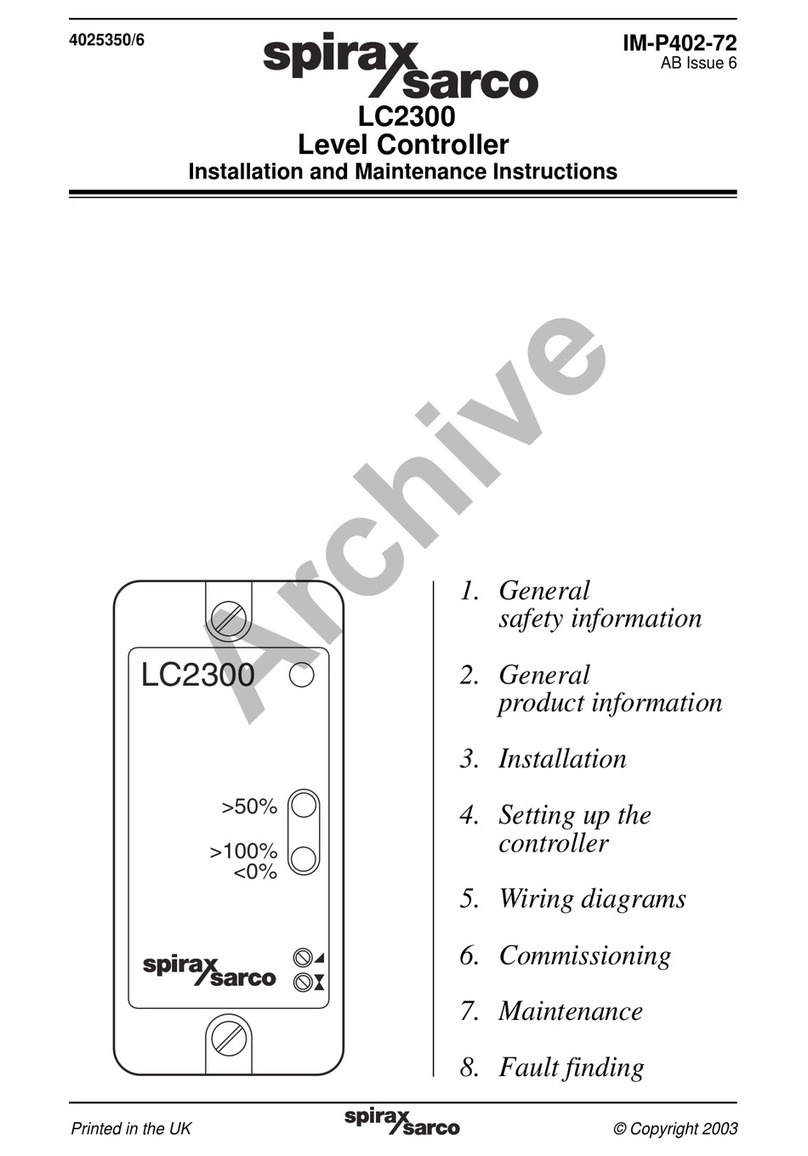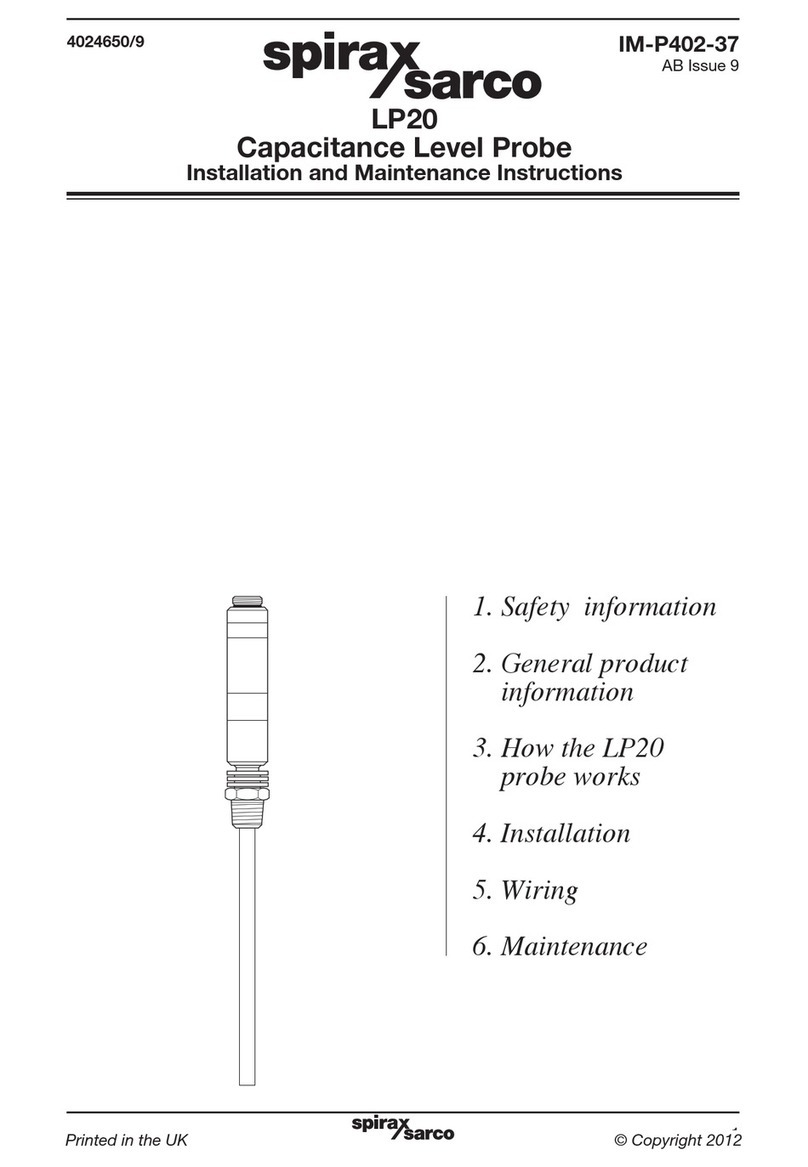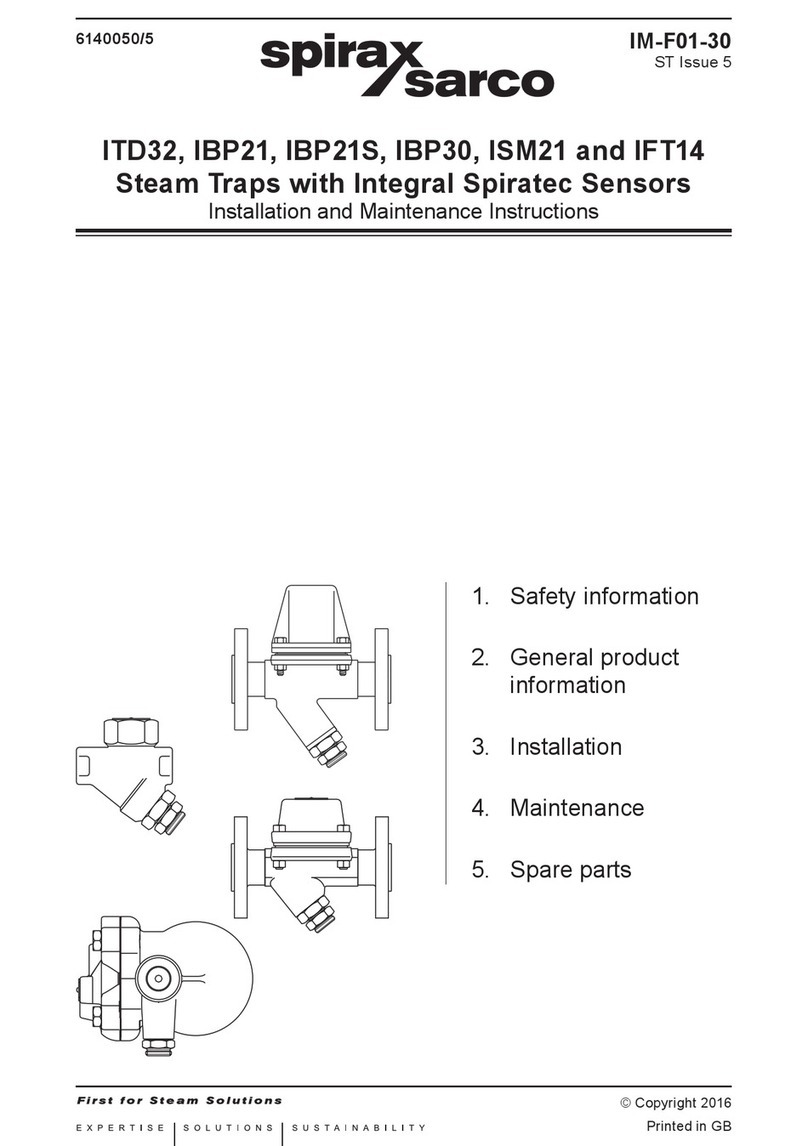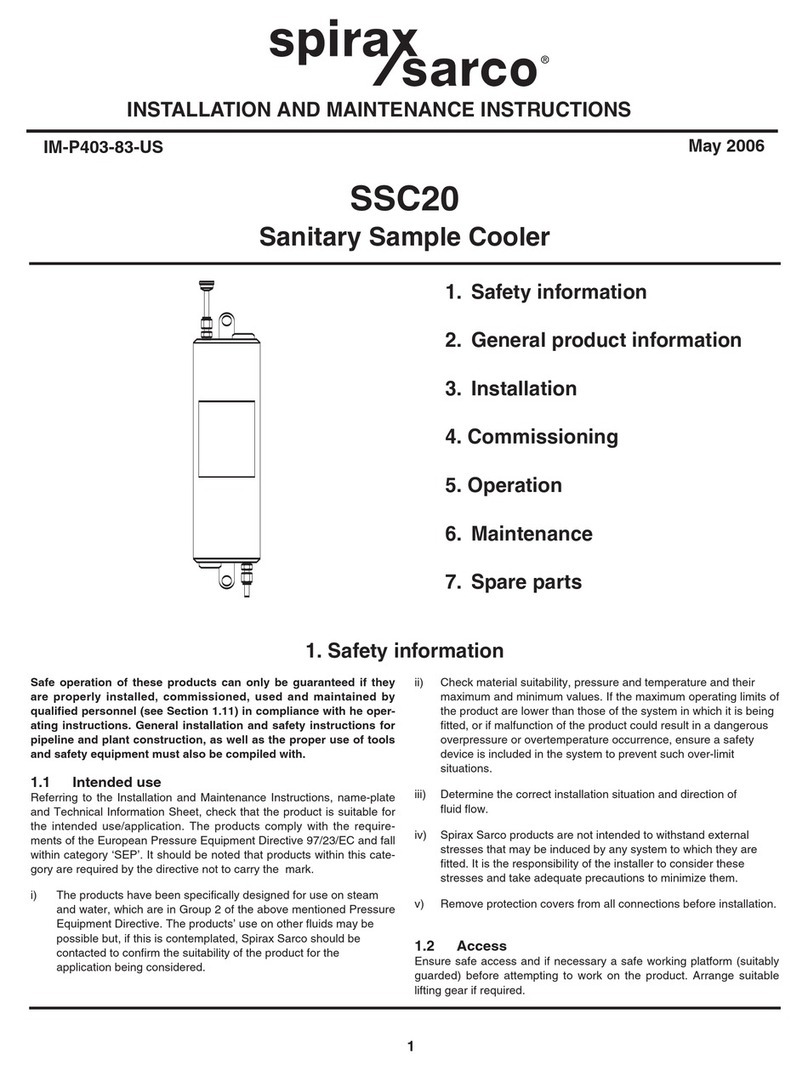
IM-P402-62 AB Issue 54
4. Setting up the transmitter
4.1 Setting up the transmitter
The transmitter is set up as follows:
-230 V mains supply.
-Wave filter off.
-4-20 mA.
-Normal (non-inverse) output.
-Capacitance probe input (voltage).
4.2 To change the mains supply voltage:
-Unplug the transmitter from its base.
-Remove the rear cover panel.
-Slide out the printed circuit board.
-Slide the voltage selector switch to the 115 V setting.
-Replace the printed circuit board.
-Ensure that the LED’s engage with the holes in the front panel.
-Replace the rear cover panel.
Slide switch
up for 115 V
setting
230 Transformer
Fig. 2
3. Installation
WARNING:
Isolate the mains supply before unplugging the transmitter since hazardous voltages will be
exposed on the transmitter base.
To unplug the transmitter from its base, undo the two retaining screws and pull the transmitter
straight forwards. Rocking the transmitter in the vertical plane will ease removal.
The transmitter must be installed in an enclosure or control panel to provide environmental
protection (Pollution Degree 2). Spirax Sarco can provide suitable metal or plastic enclosures.
The transmitter may be mounted on a 'top hat' DIN rail using the clip provided or the clip can be
removed and the transmitter base screwed directly to a chassis plate.
Caution: Allow 15 mm spacing between multiple units for air circulation.
The transmitter is for installation Category II (Overvoltage category) and must be installed in
accordance with IEC 60364 or equivalent. The transmitter and all connected circuits must
have a common isolation system which meets the relevant requirements of IEC 60947-1 and
IEC 60947-3 or equivalent. This must be positioned close to the transmitter and clearly identified
as the disconnect device.
A quick blow 3 amp external fuse must be fitted in all phases of the transmitter supply.
For the US and Canadian markets the transmitter must be wired in accordance with the National
and Local Electrical Code (NEC) or Canadian Electrical Code (CEC).
Screened high temperature, 3 core, 1 mm²(18 - 16 AWG) copper cable is required for the probe
wiring.Themaximumpermittedlengthis100metres(328ft).Usecablewithasuitabletemperature
rating for the installation. Pirelli FP200 or Delta Crompton Firetuf OHLS are suitable cables for the
standard version. Use NEC Class 1 wiring for the UL version.
Cabling should be installed in accordance with BS 6739 - Instrumentation in Process Control
Systems: Installation design and practice or local equivalent.
Connect the screens as shown in the wiring diagrams (Section 5).
If the product is not used in the manner specified by this IMI, then the protection provided
may be impaired.
20 mm fuse
100 mA anti-surge (T)

































